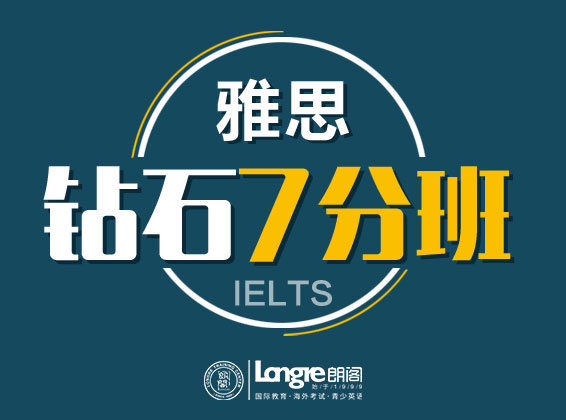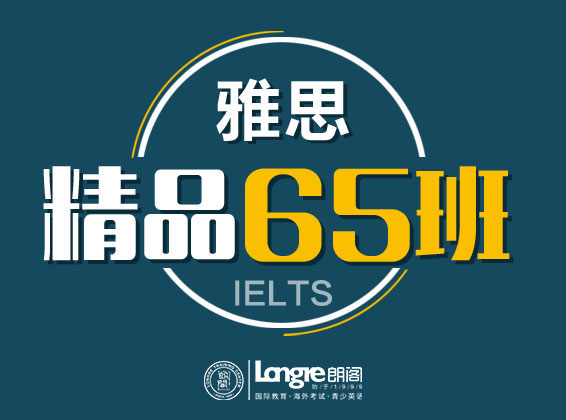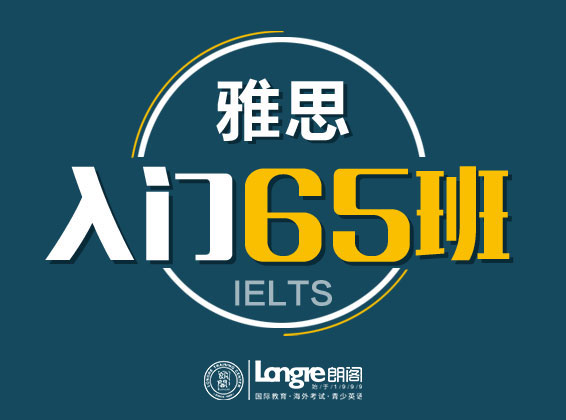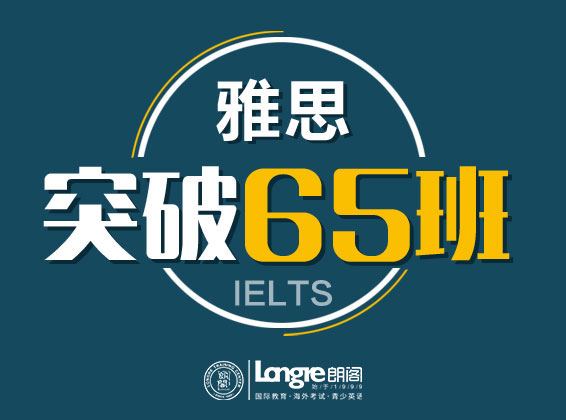|
P1 Thomas Young—The Last True Know-it All(2010年和2012年旧题) P2 Food advertising on children (2017年10月旧题) P3 Decisions, decisions! (2019年3月旧题) 朗阁雅思樊天惠点评 1. 本次考试难度中等。 2. 整体分析:涉及传记类(P1)、健康类(P2)、商业经济类(P3)。 9月的最后一场考试阅读整体难度偏高,出现了P1填空题部分乱序的情况。而我们国庆结束后的10月第一场为周四的考试,报考人数不多,相对难度降低了一些,减少了乱序的配对题,增加了判断和主旨题的考察。但是很多考生还是表示头疼,因为最后一篇P3涉及到了比较难的话题:商业经济类的决策,很多学生对相似背景的文章内容不熟悉,导致由于看不懂段落的原因单选题耗费太多时间,加之summary选择一直是很多基础不好的同学的心头大患,使得考完感受不佳。 3. 主要题型:本次考试主要题型为判断题(18题)、LOH(7题)、填空题(6题)、单选题(5题),summary选择(4题)。判断题在3篇文章中都出现了,可以说依旧是我们雅思的考察重点,各位同学要打牢基础。同时本次考试出现了简答题,我们说过,简答题就是句子填空题的变种,大家在考场上直接使用填空题的做题方法解决即可,无需惊慌。 4. 文章分析: 第一篇文章主要讲述了全才托马斯杨的生平和成就。 第二篇文章讲述了电视广告主导了面向儿童的食品促销,而且绝大多数是向儿童销售所谓的“大四类”加糖的早餐走片,软饮料,甜点和小吃。 第三篇介绍人类在做不同决定时的考虑。 5. 部分答案及参考文章: Passage 1:Thomas Young—The Last True Know-it All 题型:判断7+简答6 参考文章: Thomas Young The Last True Know-It-All A Thomas Young (1773-1829) contributed 63 articles to the Encyclopedia Britannica, including 46 biographical entries (mostly on scientists and classicists) and substantial essays on "Bridge,” "Chromatics," "Egypt," "Languages" and "Tides". Was someone who could write authoritatively about so many subjects a polymath, a genius or a dilettante? In an ambitious new biography, Andrew Robinson argues that Young is a good contender for the epitaph "the last man who knew everything." Young has competition, however: The phrase, which Robinson takes for his title, also serves as the subtitle of two other recent biographies: Leonard Warren's 1998 life of paleontologist Joseph Leidy (1823-1891) and Paula Findlen's 2004 book on Athanasius Kircher (1602-1680), another polymath. B Young, of course, did more than write encyclopedia entries. He presented his first paper to the Royal Society of London at the age of 20 and was elected a Fellow a week after his 21st birthday. In the paper, Young explained the process of accommodation in the human eye on how the eye focuses properly on objects at varying distances. Young hypothesized that this was achieved by changes in the shape of the lens. Young also theorized that light traveled in waves and he believed that, to account for the ability to see in color, there must be three receptors in the eye corresponding to the three "principal colors" to which the retina could respond: red, green, violet. All these hypothesis were subsequently proved to be correct. C Later in his life, when he was in his forties, Young was instrumental in cracking the code that unlocked the unknown script on the Rosetta Stone, a tablet that was "found" in Egypt by the Napoleonic army in 1799. The stone contains text in three alphabets: Greek, something unrecognizable and Egyptian hieroglyphs. The unrecognizable script is now known as demotic and, as Young deduced, is related directly to hieroglyphic. His initial work on this appeared in his Britannica entry on Egypt. In another entry, he coined the term Indo-European to describe the family of languages spoken throughout most of Europe and northern India. These are the landmark achievements of a man who was a child prodigy and who, unlike many remarkable children, did not disappear into oblivion as an adult. D Born in 1773 in Somerset in England, Young lived from an early age with his maternal grandfather, eventually leaving to attend boarding school. He had devoured books from the age of two, and through his own initiative he excelled at Latin, Greek, mathematics and natural philosophy. After leaving school, he was greatly encouraged by his mother's uncle, Richard Brocklesby, a physician and Fellow of the Royal Society. Following Brocklesby's lead, Young decided to pursue a career in medicine. He studied in London, following the medical circuit, and then moved on to more formal education in Edinburgh, Gottingen and Cambridge. After completing his medical training at the University of Cambridge in 1808, Young set up practice as a physician in London. He soon became a Fellow of the Royal College of Physicians and a few years later was appointed physician at St. George's Hospital. E Young's skill as a physician, however, did not equal his skill as a scholar of natural philosophy or linguistics. Earlier, in 1801, he had been appointed to a professorship of natural philosophy at the Royal Institution, where he delivered as many as 60 lectures in a year. These were published in two volumes in 1807. In 1804 Young had become secretary to the Royal Society, a post he would hold until his death. His opinions were sought on civic and national matters, such as the introduction of gas lighting to London and methods of ship construction. From 1819 he was superintendent of the Nautical Almanac and secretary to the Board of Longitude. From 1824 to 1829 he was physician to and inspector of calculations for the Palladian Insurance Company. Between 1816 and 1825 he contributed his many and various entries to the Encyclopedia Britannica, and throughout his career he authored numerous books, essays and papers. F Young is a perfect subject for a biography - perfect, but daunting. Few men contributed so much to so many technical fields. Robinson's aim is to introduce non-scientists to Young's work and life. He succeeds, providing clear expositions of the technical material (especially that on optics and Egyptian hieroglyphs). Some readers of this book will, like Robinson, find Young's accomplishments impressive; others will see him as some historians have - as a dilettante. Yet despite the rich material presented in this book, readers will not end up knowing Young personally. We catch glimpses of a playful Young, doodling Greek and Latin phrases in his notes on medical lectures and translating the verses that a young lady had written on the walls of a summerhouse into Greek elegiacs. Young was introduced into elite society, attended the theatre and learned to dance and play the flute. In addition, he was an accomplished horseman. However, his personal life looks pale next to his vibrant career and studies. G Young married Eliza Maxwell in 1804, and according to Robinson, "their marriage was a happy one and she appreciated his work." Almost all we know about her is that she sustained her husband through some rancorous disputes about optics and that she worried about money when his medical career was slow to take off. Very little evidence survives about the complexities of Young's relationships with his mother and father. Robinson does not credit them, or anyone else, with shaping Young's extraordinary mind. Despite the lack of details concerning Young's relationships, however, anyone interested in what it means to be a genius should read this book. Questions 1-7 Do the following statements agree with the information given in Reading Passage 1? In boxes 1-6 on your answer sheet, write TRUE if the statement is true FALSE if the statement is false NOT GIVEN if the information is not given in the passage 1 “The last man who knew everything” has also been claimed to other people. 2 All Young’s articles were published in Encyclopedia Britannica. 3 Like others, Young wasn't so brilliant when grew up. 4 Young's talents as a doctor are surpassing his other skills. 5 Young's advice was sought by people responsible for local and national issues. 6 Young was interested in various social pastimes. 7 Young suffered from a disease in his later years. Questions 8-13 Answer the questions below. Choose NO MORE THAN THREE WORDS AND/OR A NUMBER from the passage for each answer. 8 How many life stories did Young write for Encyclopedia Britannica? 9 What aspect of scientific research did Young do in his first academic paper? 10 What name did Young introduce to refer to a group of languages? 11 Who inspired Young to start the medical studies? 12 Where did Young get a teaching position? 13 What contribution did Young make to London? 参考答案: 1-5:TRUE、 FALSE、 FALSE、 NOT GIVEN、 TRUE 6-10:TRUE、 NOT GIVEN、 46、human eye、 Indo-European 11-13:Richard、Royal Institution、 gas lighting Passage 2:Food advertising on children 题型: LOH 7+判断6 参考文章: Food advertising on children This review was commissioned by the Food Standards Agency to examine the current research evidence on; ※the extent and nature of food promotion children ※the effect, if any, that this promotion has on their food knowledge, preferences and behaviour. A. Children’s food promotion is dominated by television advertising, and the great majority of this promotes the so-called ‘Big Four’ of pre-sugared breakfast cereals, soft-drinks, confectionary and savoury snacks. In the last ten years advertising for fast food outlets has rapidly increased. There is some evidence that the dominance of television has reinforces a need for multi-faceted communications combining television with merchandising, ‘tie-ins’ and point of sale activity. The advertised diet contrasts sharply with that recommended by public health advisors, and themes of fun and fantasy or taste, rather than health and nutrition, are used to promote it to children. Meanwhile, the recommended diet gets little promotional support. B. There is plenty of evidence that children notice and enjoy food promotion. However, establishing whether this actually influences them is a complex problem. The review tackled it by looking at studies that had examined possible effects on what children know about food, their food preferences, their actual food behaviour(both buying and eating),and their health outcomes(eg. obesity or cholesterol levels). The majority of studies examined food advertising , but a few examined other forms of food promotion. In terms of nutritional knowledge, food advertising seems to have little influence on children’s general perceptions of what constitutes a healthy diet, but, in certain contexts, it does have an effect on more specific types of nutritional knowledge. For example, seeing soft drink and cereal adverts reduced primary aged children’s ability to determine correctly whether or not certain products contained real fruit. C. The review also found evidence that food promotion influences children’s food preferences and their purchase behaviour. A study of primary school children, for instance, found that exposure to advertising influenced which foods they claimed to like; and another showed that labeling and signage on a vending machine had an effect on what was bought by secondary school pupils. A number of studies have also shown that food advertising can influence what children eat. One, for example, showed that advertising influenced a primary class’s choice of daily snack at playtime. D. The next step, of trying to establish whether or not a link exists between food promotion and diet or obesity, is extremely difficult as it requires research to be done in real world settings. A number of studies have attempted this by using amount of television viewing as a proxy for exposure to television advertising. They have established a clear link between television viewing and diet, obesity, and cholesterol levels. It is impossible to say, however, whether this effect is caused by the advertising, the sedentary nature of television viewing or snacking that might take place whilst viewing. One study resolved this problem by taking a detailed diary of children’s viewing habits. This showed that the more food adverts they saw, the more snacks and calories they consumed. E. Thus the literature does suggest food promotion is influencing children’s diet in a number of ways. This does not amount to proof; as noted above with this kind of research, incontrovertible proof simply isn’t attainable. Nor do all studies point to this conclusion; several have not found an effect. In addition, very few studies have attempted to measure how strong these effects are relative to other factors influencing children’s food choices. Nonetheless, many studies have found clear effects and they that 1.these effects are not just due to chance 2.they are independent of other factors that may influence diet, such as parent’s eating habits or attitudes; 3.they occur at a brand and category level. F. Furthermore, two factors suggest that these findings actually downplay the effect that food promotion has on children. First, the literature focuses principally on television; the cumulative effect of this significantly greater. Second, the studies have looked at direct effects on individual children, and understate indirect influences. For example, promotion for fast food outlets may not only influence the child, but also encourage parents to take them for meals and reinforce the idea that this is a normal and desirable behaviour. G. This does not amount to proof of an effect, but in our view does provide sufficient evidence to conclude that an effect exists. The debate should now shift to what action is needed, and specifically to how the power of commercial marketing can be used to bring about improvements in young people’s eating. List of Headings i General points of agreements and disagreements of researchers ii How much children really know about food iii Need to take action iv Advertising effects of the “Big Four” v Connection of advertising and children’s weight problems vi Evidence that advertising affects what children buy to eat vii How parents influence children’s eating habits viii Advertising’s focus on unhealthy options ix Children often buy what they want x Underestimating the effects advertising has on children 1 Paragraph A 2 Paragraph B 3 Paragraph C 4 Paragraph D 5 Paragraph E 6 Paragraph F 7 Paragraph G T/F/NG 8 There is little difference between the number of healthy food advertisements and the number of unhealthy food advertisements. 9 TV advertising has successfully taught children nutritional knowledge about vitamins and others. 10 It is hard to decide which aspect of TVviewing has caused weight problems of children. 11 The preference of food for children isaffected by their age and gender. 12 Wealthy parents tend to buy more“sensible food” for their children. 13 There is a lack of investigation on food promotion methods other than TV advertising. 参考答案: 1-7:viii、ii、vi、v、i、x、iii 8-13:NO、NO、YES、NOT GIVEN、YES、NOT GIVEN Passage 3:Decisions, decisions! 题型:单选5+summary选择4+判断5 文章参考: A widely recognised legend tells us that in Gordium (in what is now Turkey) in the fourth century BC an oxcart was roped to a pole with a complex knot. It was said that the first person to untie it would become the king of Asia. Unfortunately, the knot proved impossible to untie. The story continues that when confronted with this problem, rather than deliberating on how to untie the Gordian knot. Alexander, the famous ruler of the Greeks in the ancient world, simply took out his sword and cut it in two - then went on to conquer Asia. Ever since, the notion of a ‘Gordian solution’ has referred to the attractiveness of a simple answer to an otherwise intractable problem. Among researchers in the psychology of decision making, however, such solutions have traditionally held little appeal. In particular, the ‘conflict model’ of decision making proposed by psychologists Irving Janis and Leon Mann in their 1977 book, Decision Making, argued that a complex decision making process is essential for guarding individuals and groups from the peril of ‘group-think’. Decisions made without thorough canvassing, surveying, weighing, examining and reexamining relevant information and options would be suboptimal and often disastrous. One foreign affairs decision made by a well-known US political leader in the 1960s is typically held us as an example of the perils of inadequate thought, whereas his successful handling of a later crisis is cited as an example of the advantages of careful deliberation. However, examination of these historical events by Peter Suedfield, a psychologist at the University of British Columbia, and Roderick Kramer, a psychologist at the Stanford Graduate School of Business, found little difference in the two decision-making processes; both crises required and received complex consideration by the political administration, but later only the second one was deemed to be the effective. In general, however, organizational and political science offer little evidence that complex decisions fare better than simpler ones. In fact, a growing body of work suggests that in many situations simple ‘snap’ decisions will be routinely superior to more complex ones - an idea that gained widespread public appeal with Malcolm Gladwell’s best-selling book Blink (2005). An article by Ap Dijksterhuis of the University of Amsterdam and his colleagues, ‘On Making the Right Choice: the Deliberation-without-attention Effect’, runs very much in the spirit of Gladwell’s influential text. Its core argument is that to be effective, conscious (deliberative) decision making requires cognitive resources. Because increasingly complex decisions place increasing strain on those resources, the quality of our decisions declines as their complexity increases. In short, complex decisions overrun our cognitive powers. On the other hand, unconscious decision making (what the author refer to as ‘deliberation without attention’) requires no cognitive resources, so task complexity does not degrade effectiveness. The seemingly counterintuitive conclusion is that although conscious thought enhances simple decisions, the opposite holds true for more complex decisions. Dijksterhuis reports four simple but elegant studies supporting this argument. In one, participants assessed the quality of four hypothetical cars by considering either four attributes (a simple task) or 12 attributes (a complex task). Among participants who considered four attributes, those who were allowed to engage in undistracted deliberative thought did better at discriminating between the best and worst cars. Those who were distracted and thus unable to deliberate had to rely on their unconscious thinking and did less well. The opposite pattern emerged when people considered 12 criteria. In this case, conscious deliberation led to inferior discrimination and poor decisions. In other study, Dijksterhuis surveyed people shopping for clothes (‘simple’ products) and furniture (‘complex’ products). Compared with those who said they had deliberated long and hard, shoppers who bought with little conscious deliberation felt less happy with their simple clothing purchase but happier with the complex furniture purchases. Deliberation without attention actually produced better results as the decisions became more complex. From there, however, the researchers take a big leap. They write: There is no reason to assume that the deliberation-without-attention effect does not generalize to other types of choices - political, managerial or otherwise. In such cases, it should benefit the individual to think consciously about simple matters and to delegate thinking about more complicated matters to the unconscious. This radical inference contradicts standard political and managerial theory but doubtless comforts those in politics and management who always find the simple solution to the complex problem an attractive proposition. Indeed, one suspects many of our political leaders already embrace this wisdom. Still it is there, in the realms of society and its governance, that the more problematic implications of deliberation without attention begin to surface. Variables that can be neatly circumscribed in decisions about shopping lose clarity in a world of group dynamics, social interaction, history and politics. Two pertinent questions arise. First, what counts as a complex decision? And second, what counts as a good outcome? As social psychologist Kurt Lewin (1890 - 1947) noted, a ‘good’ decision that nobody respects is actually bad. His classic studies of decision making showed that participating in deliberative processes makes people more likely to abide by the results. The issue here is that when political decision makers make mistakes, it is their politics, or the relation between their politics and our own, rather than psychology which is at fault. Gladwell’s book and Dijksterhuis’s paper are invaluable in pointing out the limitations of the conventional wisdom that decision quality rises with decision-making complexity. But this work still tempts us to believe that decision making is simply a matter of psychology, rather than also a question of politics, ideology and group membership. Avoiding social considerations in a search for general appeal can take us away from enlightenment rather than toward it. 参考答案: 27-31:B、B、C、B、D 32-35:A、D、G、B 36-40:NO、NOT GIVEN、NOT GIVEN、YES、NOT GIVEN 考试预测 1. 2019年10月第一场考试,难度中等,除了最后一篇带单选的文章外,前两篇难度都不高。报了10月12号考试的同学,一定要警惕下场考试中配对题的大量出现。因为本场考试除了LOH外,一道配对都没有出。下场考试很可能会出现的题型有:段落信息匹配,人名观点配对,以及多选题。填空和判断是逢场必考的经典题型,大家应当继续练手,但是这两天的重点要放在配对上,熟悉乱序题型的做法。使用关键词定位的同时,也要掌握理解定位,逻辑关系定位,和常见同义替换的复习。 2. 下场考试的话题可能有关历史类,科学类,生物类。 3. 重点浏览2012-2019年机经。 (责任编辑:jasmine) |
文中图片素材来源网络,如有侵权请联系删除







